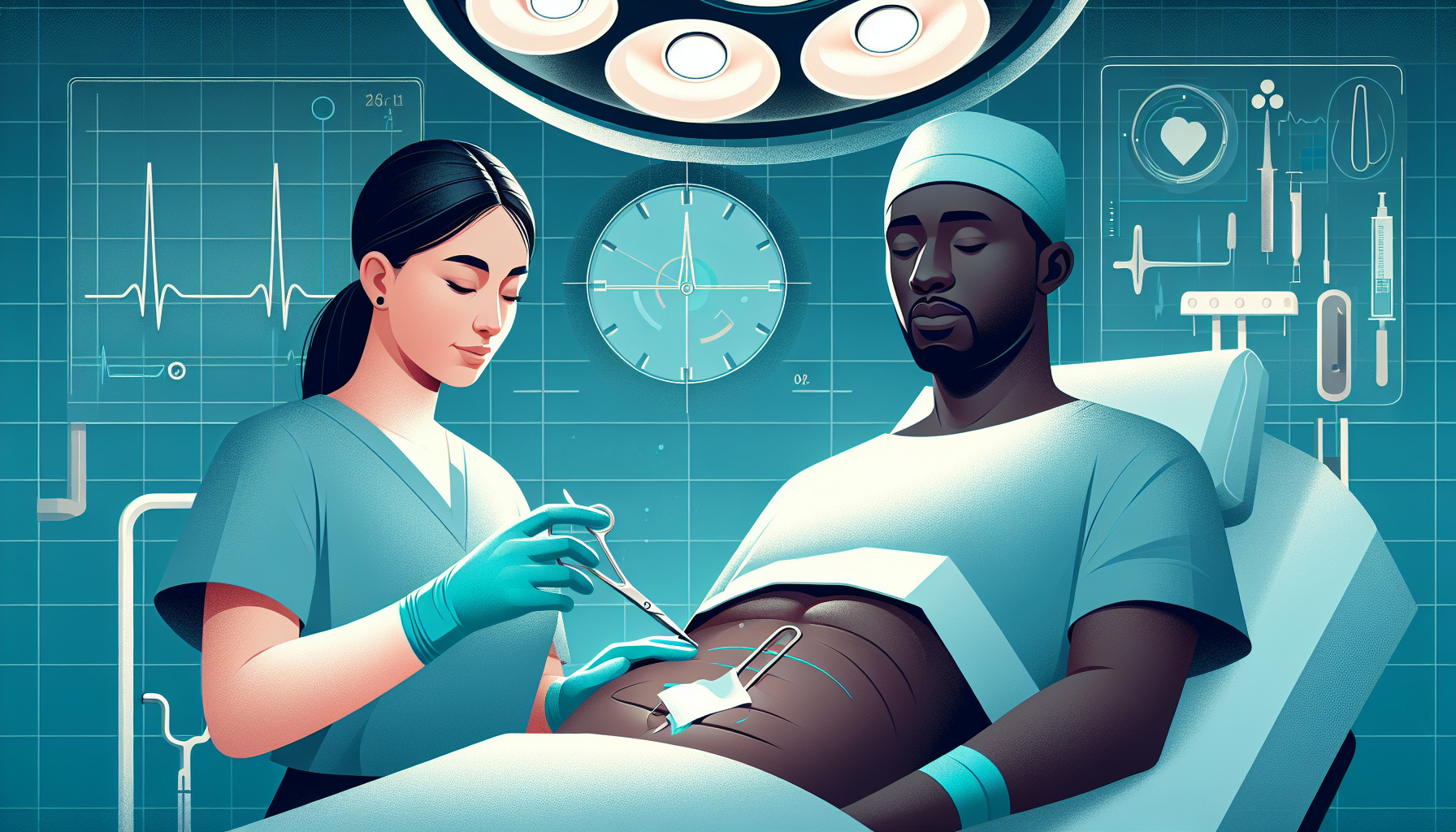Our Summary
This study looked at the outcomes of using robotic surgery for non-elective colectomies (removal of part or all of the colon) to treat diverticulitis (a condition causing inflammation and infection in the digestive tract). The research considered data from surgeries between 2012 and 2019, excluding patients with certain conditions and those who underwent open or elective surgeries.
Of the 6880 surgeries evaluated, most were laparoscopic (where small instruments are used through small incisions), while a smaller number were robotic (where a machine controlled by a surgeon performs the operation). The laparoscopic group had a higher number of preoperative sepsis (serious infection), emergency cases, and severe wound classifications.
The results showed no difference in mortality, leakage at the surgical site, surgical site infections, reoperations, readmissions, or length of hospital stay between the two groups. However, the laparoscopic group had more cases of postoperative sepsis, and the robotic group had more instances of bleeding.
Various factors like age, presence of chronic obstructive pulmonary disease (COPD), dependence on others for daily activities, use of dialysis, preoperative blood transfusions, emergency status, higher ASA (American Society of Anesthesiologists) classification, and abnormal white blood cell count were independently linked to mortality. However, the study found that the use of robotic surgery was not associated with a higher risk of mortality, reoperation, or septic shock after accounting for these factors.
In simpler terms, this study suggests that robotic surgery can be a viable option for the urgent treatment of diverticulitis.
FAQs
- What was the main focus of this study on diverticulitis surgery?
- Was there any difference in outcomes between laparoscopic and robotic surgeries for treating diverticulitis according to this study?
- Was the use of robotic surgery associated with a higher risk of mortality, reoperation, or septic shock?
Doctor’s Tip
Patients undergoing diverticulitis surgery may benefit from considering robotic surgery as a potential option. This method has been shown to have similar outcomes to traditional laparoscopic surgery, with no increased risk of mortality or complications. Discuss with your doctor to see if robotic surgery may be a suitable choice for your situation. Additionally, focus on maintaining a healthy lifestyle post-surgery to aid in recovery and prevent future flare-ups of diverticulitis.
Suitable For
Patients who may be recommended diverticulitis surgery include those with severe cases of diverticulitis that do not respond to other treatments, those with complications such as abscesses, perforations, or fistulas, those with recurrent episodes of diverticulitis, and those with a high risk of developing complications. Additionally, patients who are deemed suitable candidates for robotic surgery based on their overall health and medical history may also be recommended for this type of surgery.
Timeline
Before diverticulitis surgery, a patient may experience symptoms such as abdominal pain, bloating, fever, and changes in bowel habits. They may undergo tests such as CT scans or colonoscopies to diagnose diverticulitis. Once diagnosed, the patient may be put on antibiotics and a liquid diet to manage the inflammation.
After surgery, the patient will typically stay in the hospital for a few days to recover. They may experience pain, fatigue, and changes in bowel habits as they heal. The surgical site will need to be cared for to prevent infection, and the patient will gradually reintroduce solid foods into their diet. Follow-up appointments with the surgeon will be scheduled to monitor the healing process and address any concerns.
Overall, the goal of diverticulitis surgery is to remove the affected part of the colon and alleviate symptoms. With proper care and follow-up, most patients can recover fully and resume their normal activities.
What to Ask Your Doctor
Here are some questions a patient may consider asking their doctor about diverticulitis surgery:
- What are the benefits of robotic surgery compared to laparoscopic or open surgery for diverticulitis?
- Are there any specific risks or complications associated with robotic surgery for diverticulitis?
- How experienced are you in performing robotic surgery for diverticulitis?
- What is the expected recovery time and potential limitations after robotic surgery for diverticulitis?
- Will I need any additional follow-up procedures or treatments after robotic surgery for diverticulitis?
- How does robotic surgery for diverticulitis compare in terms of cost and insurance coverage?
- Are there any specific lifestyle changes or dietary recommendations I should follow after robotic surgery for diverticulitis?
- What is the long-term outlook for patients who undergo robotic surgery for diverticulitis?
- Are there any alternative treatment options to consider before opting for robotic surgery for diverticulitis?
- Can you provide any additional information or resources to help me better understand robotic surgery for diverticulitis?
Reference
Authors: Arnott SM, Arnautovic A, Haviland S, Ng M, Obias V. Journal: J Robot Surg. 2023 Apr;17(2):587-595. doi: 10.1007/s11701-022-01452-3. Epub 2022 Sep 1. PMID: 36048320
